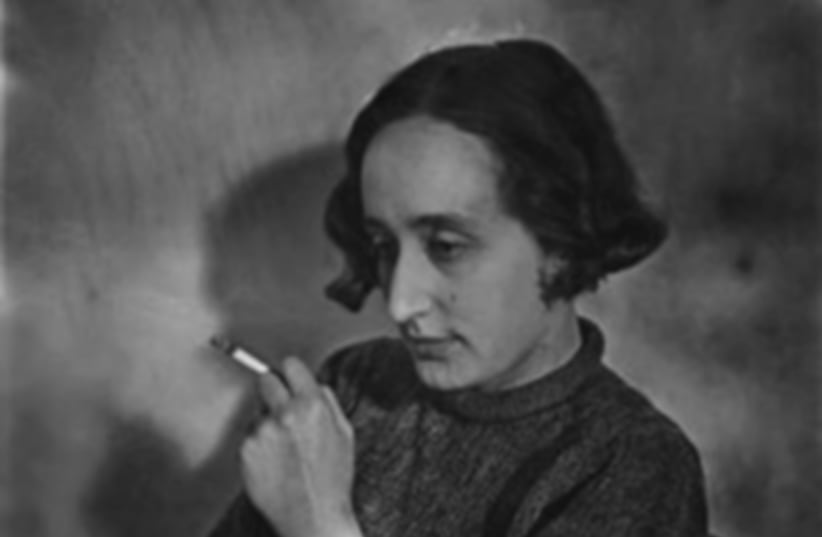In real life, according to the 2016 documentary film Tracking Edith by Peter Stephan Jungk and produced by Lillian Birnbaum, spy work is not so exciting.
Real-world spies are more like the late Rafi Eitan, who managed Jewish-American spy Jonathan Pollard, and who is usually credited for the 1960 operation in which Nazi war criminal Adolf Eichmann was captured. Eitan, with his spectacles and usually unkempt attire, did not look like the spy-master he is alleged to have been.
“Espionage is hard work,” Jungk told The Jerusalem Post. “It has to do with putting people together... like sewing.” He confesses that after spending years interviewing people who participated in spy work on both sides of the Cold War, “The more you get into it, the more things become foggy.”
Born in California and raised in post-World War II Vienna by the late anti-nuclear proliferation activist and writer Robert Jungk, Peter Jungk is an accomplished writer who decided to commit his 2015 book about his elusive aunt to film, thinking her achievements as a photographer will be better served by a visual medium. (The book, Die Dunkelkammern der Edith Tudor-Hart, has not yet been published in English.)
The people his aunt sewed together were the Cambridge Five, upper-class British men who secretly worked for the Soviet Union, from before the war against Hitler began until they were exposed in the 1950s. Other known members besides Kim Philby were art historian Anthony Blunt, diplomats Donald Maclean and Guy Burgess, and intelligence officer John Cairncross.
The shock and embarrassment caused to the British establishment by the discovery of this betrayal were immense. As explored in the film, it is highly likely that the five were instrumental in the USSR obtaining the means to produce nuclear weapons. Soviet capability of a second, not to mention first strike, is presented as one possible reason the US never attempted to play the nuclear card during the Korean or Vietnam wars.
First mentioned in the 1987 autobiography Spycatcher by former MI5 officer Peter Wright, Edith was credited for arranging the initial meeting between Philby and his KGB handler, Arnold Deutsch. What was not apparent until Jungk released his book in 2015 was the extent of her involvement. Not only was she Deutsch’s lover, she was named “the grandmother to us all” by Blunt.
Intense, artistic, with a tragic life history encompassing various strained romantic relationships and single motherhood – Edith was “what the Nazis referred to as a Jewish Bolshevik,” Jungk told the Post.
Noting she never accepted money for her work for the USSR, he added, “The others [Philby and Blunt] had their money, Edith didn’t.”
After struggling to make ends meet in London as a photographer, and having being questioned by the Secret Service after the war as suspicions against her grew, Edith eventually made her way to Brighton, where she opened an antique shop.
Fictional spies die while still working for “The Company” in the US, or never really retire from “The Circus” if they are British. Real life spies, like Rafi and Edith, have a post-clandestine life as well.
In a film rife with references to the 20th century, from the Spanish Civil War to Anna Freud and the hunger marches in pre-war Britain – the film is oddly silent when it comes to the murder of European Jewry by the Nazis.
Jungk, who spent time in Israel in a yeshiva and wrote of it in his 1985 book Shabbat: A Rite of Passage in Jerusalem, confesses that as Edith herself never mentioned the topic, he couldn’t really include it in the film.
Edith, who was able to spend the war in London while working for the Soviets and perfecting her art, was so assimilated she sent her surviving family Christmas cards.
Tudor-Hart will soon be honored by a retrospective exhibition of her documentary photography at London’s Tate Modern. “It is time we rediscover her,” Birnbaum told the Post. “She didn’t want to leave traces, but she did.”
‘Tracking Edith’ will be shown as part of the Epos International Film Festival at the Tel Aviv Museum of Art, 27 Sderot Sha’ul Hamelech, on Saturday, March 30, at 5 p.m.
